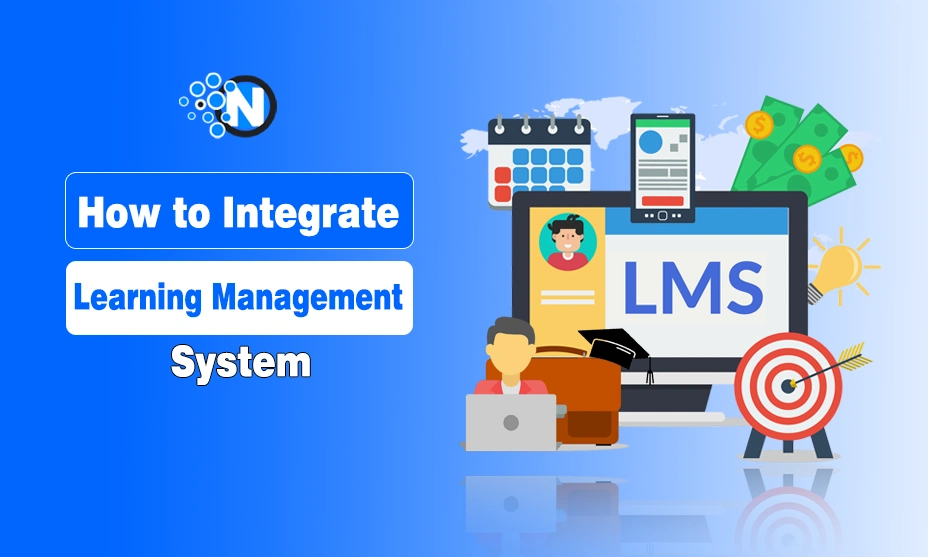The incorporation of a Learning Management System (LMS) into an organization’s operations is a crucial step towards improving educational delivery and streamlining training processes. An LMS acts as a versatile platform that not only facilitates effective knowledge transfer but also aids in tracking and evaluating progress efficiently.
To ensure a smooth and impactful integration, it is essential to follow a well-defined approach that considers both technical and user-centric aspects. In this article, we will outline the important steps for successfully integrating a learning management system to maximize its benefits. Let’s dive in!
### What is a Learning Management System (LMS)?
A Learning Management System (LMS) is an e-Learning software platform that enables online instructors to manage students and educational materials. It modernizes the way people are educated and tracks their training history. An advantage of using an LMS is the ability to easily structure and organize course material for online availability.
An LMS typically consists of a server for managing course material and a user-friendly browser-based interface for students. This system can authenticate registered enrollees and has been crucial for educational institutions during the pandemic. It can also facilitate employee orientation, train marketers, and implement workplace safety programs.
To successfully integrate a learning management system, thorough planning and the implementation of a customized framework are necessary to ensure seamless knowledge transfer. By following best practices in e-learning platform development, educators can enhance engagement, streamline administration, and achieve better outcomes efficiently.
### Steps to Integrate Learning Management System Successfully
#### 1. Pick Your LMS Implementation Team
Selecting an experienced IT or software development team to handle the integration process can help minimize technical challenges. For businesses lacking technical expertise, having a team of technology experts ensures the proper installation and smooth operation of the LMS.
#### 2. Planning and Timeline
You can choose to build your own LMS, outsource to a developer, or opt for existing software in the market. Customizing your solution provides flexibility and freedom for your online business or classroom. Effective communication tools and project management are essential for successful learning.
Ideally, the software should be industry-specific and scalable to accommodate future growth. Security features like encryption and multi-factor authentication are crucial. Additionally, the LMS should allow integration with other technologies such as HRIS, CRM, and ERP systems.
#### 3. LMS Configuration
Configuration of the LMS platform should align with the organization’s structure, roles, and responsibilities. Confidential data should be stored securely, and the interface should be intuitive for users. Simplifying operations and avoiding unnecessary features make training initiation smoother for instructors.
#### 4. Course and Curriculum Structures
Designing e-Learning courses can be tailored to specific goals using an LMS, offering flexibility in course creation. Learning paths, clusters of courses, and blended learning functionalities can enhance the learning experience. Integration with virtual reality and various media types like video, audio, and graphics provide diverse learning opportunities.
#### 5. Prepare For Data Migration
Data migration from one system to another requires meticulous handling to avoid errors. Hiring a technology consultant to oversee IT deployment ensures data backup and transfer to the LMS. Feature mapping, data cleanup, and CSV templates aid in successful data migration, ensuring accurate and relevant data transfer.
#### 6. Testing
Conducting thorough testing of the LMS is crucial to ensure all functions work seamlessly. Pilot runs help identify any technical issues, and compatibility with mobile devices should be verified. Training reports, user interaction tracking, and mobile app functionality should be tested to guarantee a smooth learning experience.
#### 7. Assess And Wrap Up
Quality control checks ensure data integrity and accessibility within the new LMS. Performance analysis and scalability testing help refine the system for efficient operations. Educating administrators and stakeholders on system usage and gathering feedback through User Acceptance Tests (UAT) allows for refinements based on user input.
### Conclusion
Employers are increasingly leveraging e-Learning software like an LMS to accelerate employee training and skill development. The platform’s versatility allows for various training methods, making it ideal for diverse industries. Investing in an LMS not only saves time and money but also enhances awareness, making it a valuable asset for businesses and educational institutions alike.
